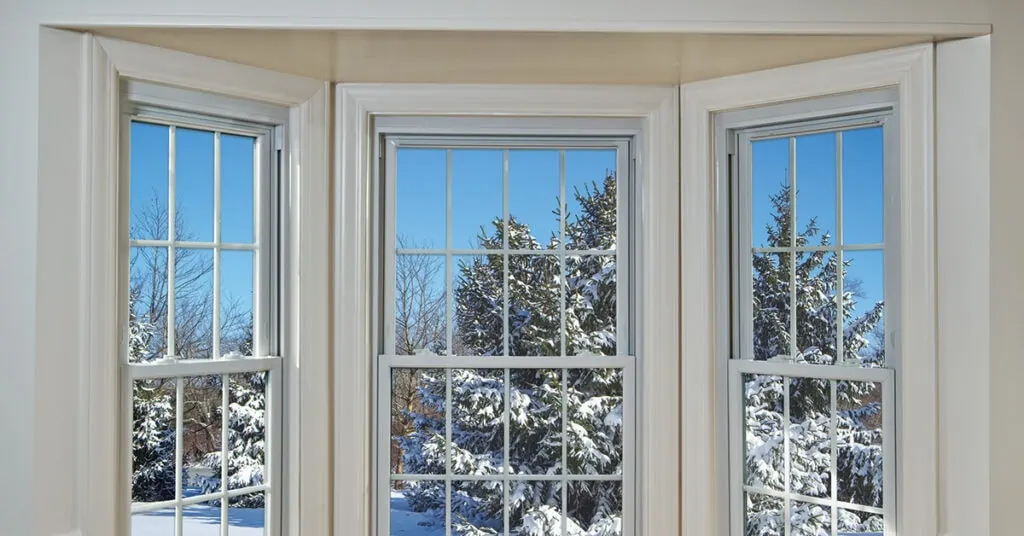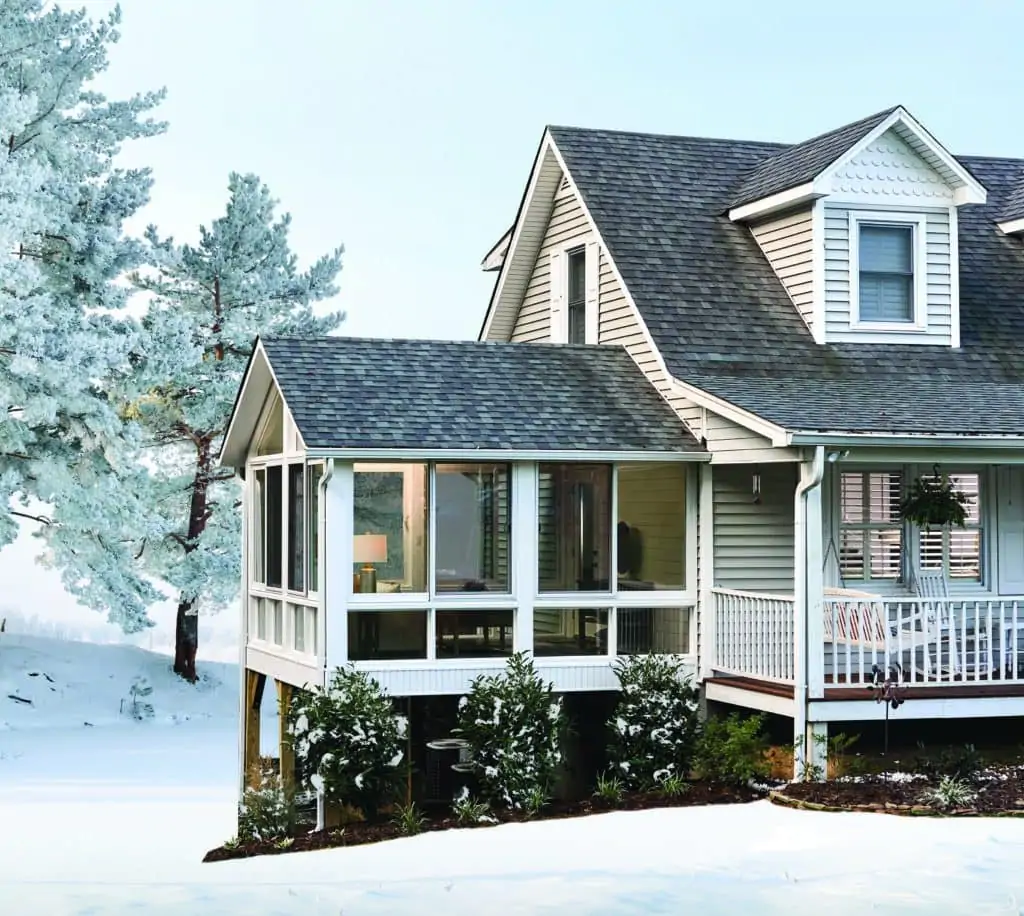The seasons are changing, and temperatures are dropping—winter is right around the corner. That means it’s time to think about winterizing your home.
One of the biggest culprits of high energy costs is a result of not sealing your home properly. And as utility costs continue to rise, dedicating the necessary time to preparing your home for winter has the potential to save you hundreds, even thousands of dollars long term.
These do-it-yourself (DIY) home winterization tips will improve your home’s energy efficiency and help you save money—a win, win.
Winterizing Tips: Windows and Doors

Seal up leaks
While most warmth is lost around windows, doors and other locations where the interior of your home meets the exterior, it can leak from other locations as well. Check around electrical outlets and plumbing pipes for gaps large enough for air to seep through and make the necessary updates to seal them. If wood is rotten, reframe. Check around fixtures throughout your home and add fiberglass insulation where needed. Spray foam into cracks and add aluminum flashing around flues.
A home energy inspection might also be worthwhile. This would help determine the amount of energy your home uses, where inefficiencies exist and what fixes should be prioritized. Even as a seasoned home DIYer, there’s no harm in getting a second opinion, especially when it could mean serious savings in the long run.
Improve or replace
To fully winterize windows, inspect their seams closely. Where they look weak or gaps appear, replace the caulk, repair weatherstripping or add insulation film to strengthen the barrier between your home and the outdoors. An additional layer of protection, insulation film is proven to prevent up to 55% of heat from escaping. If you find windows needing to be replaced, do so with double- or triple-paned windows with weatherstripping to best protect against leaks long term.
Doors bear the brunt of the brutal weather and require extra attention due to how often they’re used. When winterizing doors and the areas around them, energy efficiency can easily be boosted by adding draft guards, replacing screen doors with storm doors or installing multilayer insulated doors.
While repairing and replacing windows and doors may be a large undertaking, these updates will go a long way in improving your home’s heat-retaining efficiency and keeping money in your pocket.
Winterizing Tips: Sunrooms
Ideally, all sunrooms—including those not tied directly to your home’s HVAC system—would be used year-round, even through the cold of winter. For those hoping to use their three-season sunroom during colder months, there are several simple and affordable ways to remedy that space for the season.
Add carpet
Adding a carpet pad and thick rug to your sunroom’s hardwood or tile floor is an easy way to cozy up the room, while helping retain heat. Bonus: It’s an additional barrier between your feet and the cold, hard flooring below.
Add space heaters
Whether electric, gas or wood-burning, space heaters and fireplaces are other simple additions that warm up your sunroom space. For safety, always turn these units off or unplug them when the room is not in use.
Add curtains and more
Curtains and other window dressings go a long way to bolster the cozy look and feel of a room. Thermal insulated draperies take things a step further and retain warmth by creating a barrier between the glass windowpanes and the outdoors.
Winterizing Tips: Roofing
First and foremost, it’s important to stay on top of maintenance checks year-round to ensure no major renovations or replacements are necessary. Keeping your roof in good condition optimizes both energy use and heat retention, saving you money through all four seasons.
Gutter check
Checking and cleaning your gutters are important any time of the year. In addition to branches, leaves and other debris can build up and clog your drainage system—resulting in water backing up into your attic, behind fascia boards and even living areas. Clean your roof at least twice a year and stay on the lookout for sagging gutters, damaged drain components and other issues needing repaired or replaced.
Roof color
Another tip for winterizing your home is to pay close attention to the color of your roof. While this is routine maintenance, it matters most leading up to the colder months. Specific areas of your roof, generally those facing north, are often exposed to shade during long, humid periods and will eventually become streaked with mold, algae or fungus. If left unchecked, this will cause the roofing material to deteriorate, shortening the life of your roof and potentially leading to leaks and other signs of trouble. Address these issues as soon as you recognize them.
Shingle damage
Wear and tear from exposure to the elements causes shingles to become dilapidated or even get torn off. While over time this is expected, it can leave your roof structure and interior space vulnerable to water seepage and rot. Examine roof coverings annually while preparing your home for winter to ensure their integrity.
Taking the time to prepare your home for winter early means more relaxation, fun and family time when cold weather arrives. New windows and doors, a few small updates to your sunroom and routine roof maintenance provide ample benefits for you, your wallet and the longevity of your home.
Great Day Improvements’ family of brands offers a complete line of quality home improvement solutions for your patio, home and outdoor living space, including roofing, sunrooms, windows and doors.





